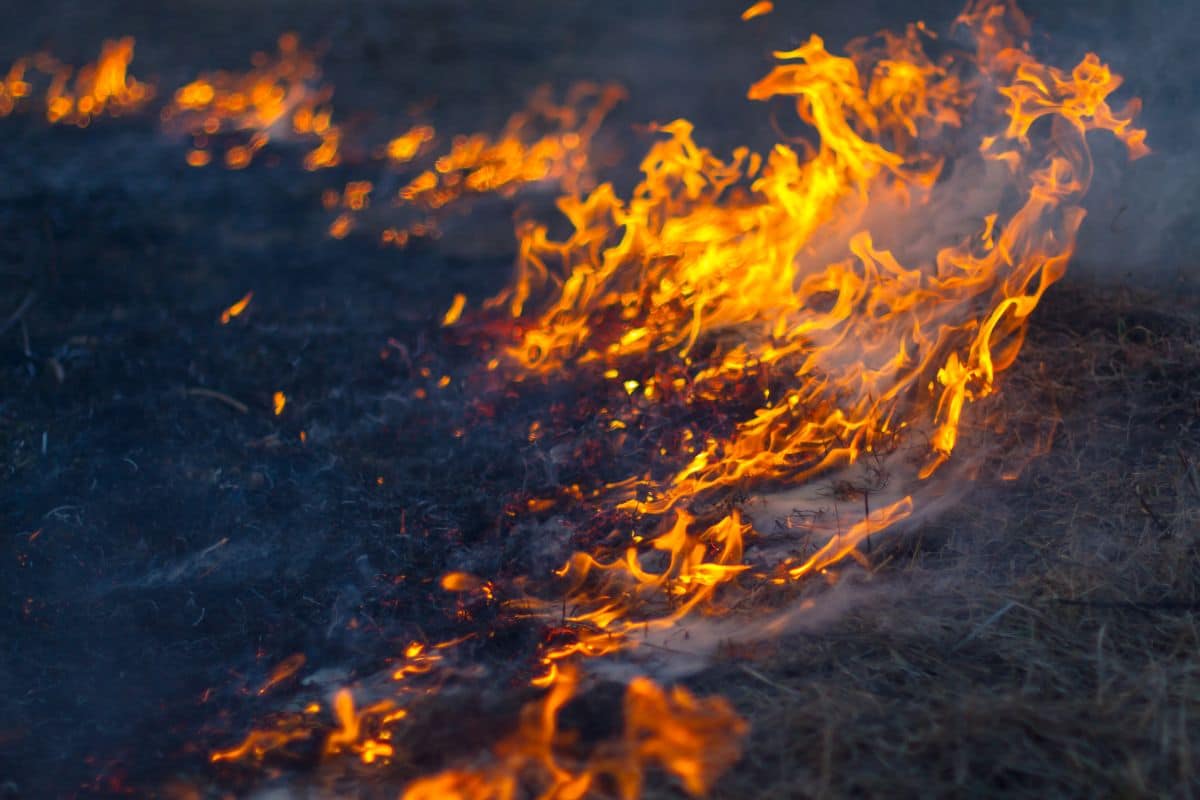
It means that the first wildfire to hit Earth was at least 10 million years earlier than previously thought.
Forest and wildfires have been a permanent part of our earth system for hundreds of millions of years. But when did the first appear on the scene? It may seem like an impossible question to answer. Yet in a new study, researchers claim to have stumbled upon the oldest traces of a wildfire. The findings can be read in the journal geology†
Charcoal
The researchers write that they have discovered 430 million-year-old charcoal remains in samples from Wales and Poland. And that’s impressive. Never before have such old traces of a fire been found.

The 430 million year old charcoal remains. It concerns the remains of a charred Prototaxites, found in a borehole in Wales. The white material is pyrite; a mineral often found in combination with charcoal. Image: Ian Glasspool
It therefore means that apparently fires could have started on Earth more than 400 million years ago. And that is certainly 10 million years earlier than previously believed.
Essential Ingredients
A wildfire needs three essential ingredients: a fuel source, an ignition source (e.g. in the form of lightning) and sufficient atmospheric oxygen. The discovery of the ancient charcoal remains suggest that these three things were already present on our early Earth about 400 million years ago. “Our evidence of fire coincides with our evidence of the earliest macrofossils of land plants,” said study researcher Ian Glasspool. “So as soon as there is fuel, a wildfire can start almost immediately.”
Plants
By the way, don’t think of large trees or lush shrubs. The types of plants that existed on Earth 430 million years ago during the Silurian geological era must have looked very different from the plants we see and know today. Instead of grasses, trees and flowers, small plants barely an inch high would have covered much of the landscape at the time. Maybe every now and then a plant reached hip height or knee height. The only giant was probably the fungus Prototaxites, which could grow up to nine meters high and tower far above the rest.
Oxygen
Besides sufficient fuel, another crucial factor for the start of a wildfire is the oxygen content in the air. At present, oxygen makes up about 21 percent of all atmospheric gases. That used to be different. Atmospheric oxygen concentrations have changed a lot over the course of history. In the early days of our planet, there was no oxygen at all.
Similar oxygen concentrations
Yet the oxygen content in the atmosphere must have been at least 16 percent about 430 million years ago. Several experiments have shown that it is unlikely that wildfires will start when the oxygen level is below 16 percent. However, the researchers assume that about 430 million years ago, the oxygen concentration was comparable to or even higher than it is today. This high content was probably the result of increased photosynthesis of terrestrial plants affecting the oxygen cycle.
The findings from the study have far-reaching implications. The results provide important new insights into the Earth’s past vegetation and oxygen levels. And from this the researchers conclude that wildfires were probably already important worldwide phenomena long ago, during the Silurian Period.
Source material:
†Earliest record of wildfires provide insights to Earth’s past vegetation and oxygen levels” – Geological Society of America